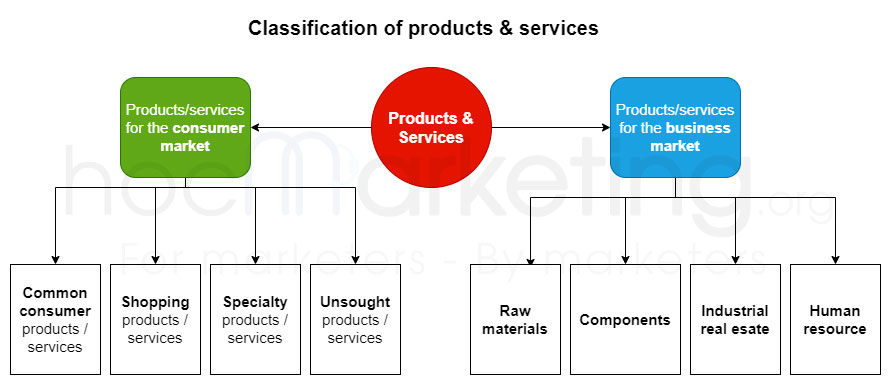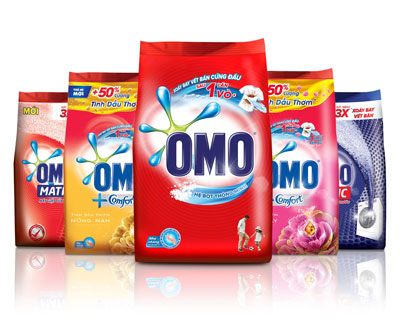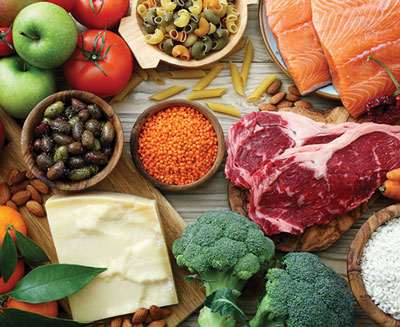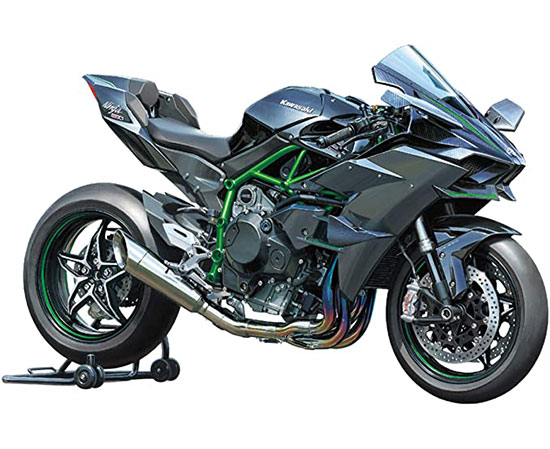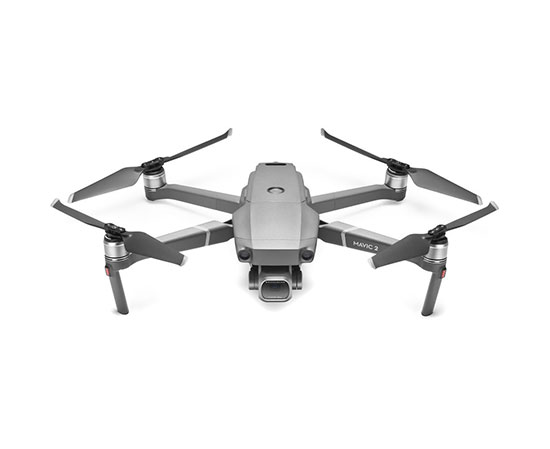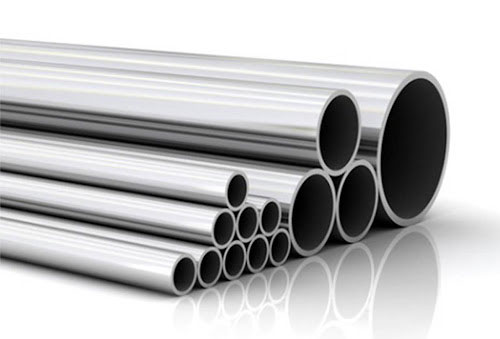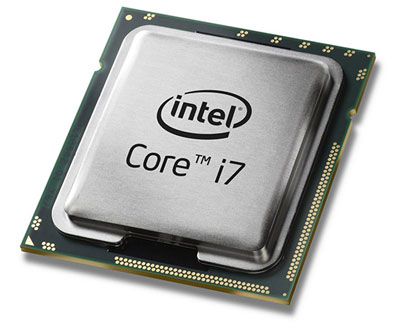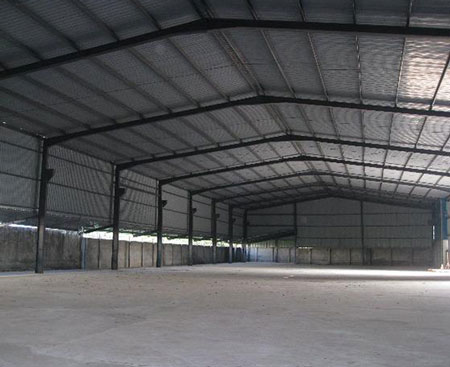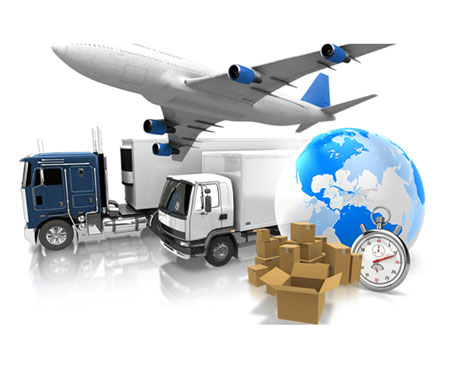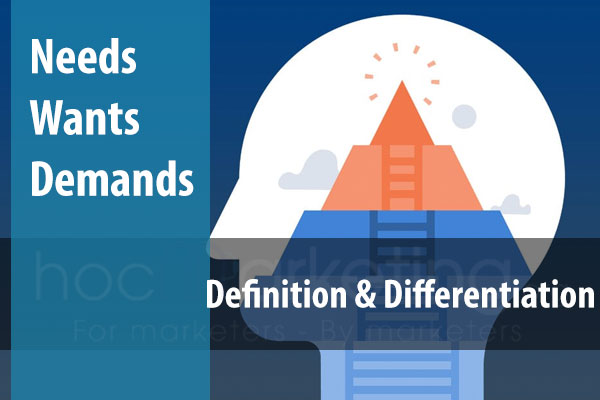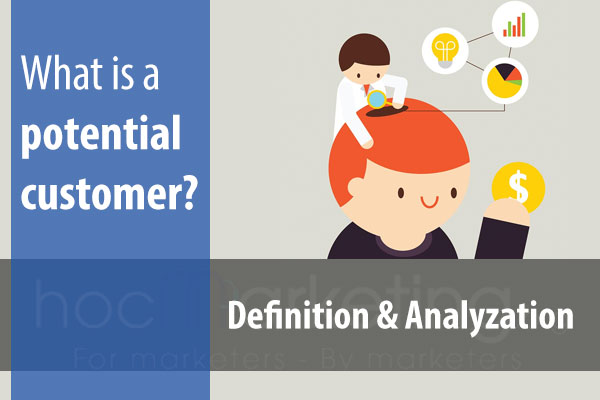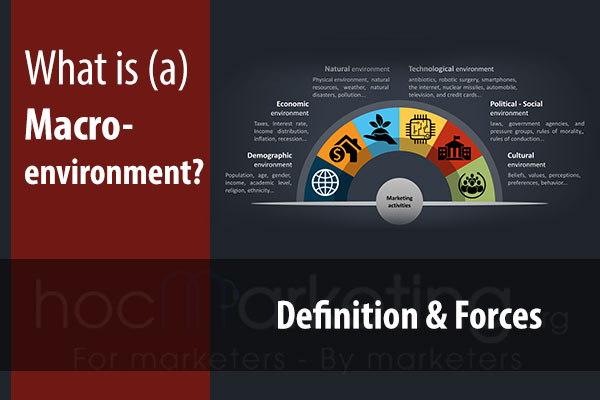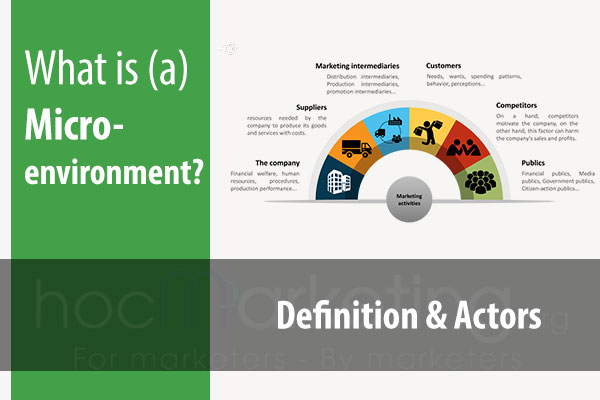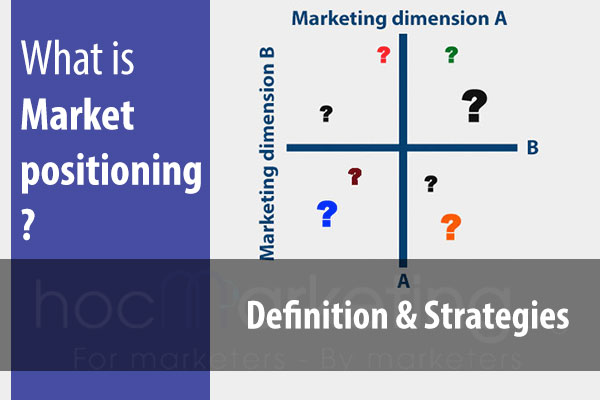
Products and services in Marketing: Definition & Classification

Understanding the different types of products/services from a marketing perspective will help businesses have more suitable marketing strategies.
Thanks to the market economy, along with the development of society and technology, businesses have launched countless products/services to meet many different needs in the market. However, from a marketing perspective, these products/groups have something in common so they can be classified into the same category/group. Products/services of the same group will have common points in the way of development, customer access, distribution, etc. Understanding the different types of products/services from a marketing perspective will help businesses have more suitable marketing strategies.
What are products and services?
Products/services are things that businesses, individuals and organizations bring to the market to satisfy the needs and desires of customers (individuals/organizations) in that market.
Products exist in physical, tangible, visible, and hand-held forms. For example: Clothes, shoes, bags, food, tables and chairs...
Services exist in an intangible form, through human or machine activities. For example: Hair washing service, hair cutting service, hotel restaurant service, travel & resort...
Classification of products/services in marketing
In general, products/services can be classified into 9 categories, in which these categories can be divided into 2 larger categories: Products/services for the consumer market (common consumer products/services, shopping products/services, specialty products/services, unsought products/services) and those for the business market (raw materials, production components, industrial real estate, human resources, aid services).
For a better visualization, take a look at the diagram below:
A. Products/services for the consumer market
1. Common consumer products/services
|
Washing powder |
Food |
Internet services |
As its name, consumer products/services are produced to serve the daily needs of consumers such as eating, drinking, washing, cleaning, cooking, living...
With a high demand, and a tendency to increase regularly, enterprises producing this type of product always produce and market it in large quantities to meet, as well as reduce production costs. A few of them are monopolistic markets and prices are controlled by the government such as electricity, water, gasoline...
Besides the high demand, the number of businesses participating in this market is not small. Often, price is a tool that helps businesses compete in these markets.
Examples:
- Essential foods
- Common clothes
- Water, electricity, gasoline
- Internet
- Communication, education
2. Shopping products/services
|
Fashionable clothes |
Travelling |
Spa |
Shopping products/services brings higher values to consumers, such as helping consumers express their personality, style... or simply entertainment, being appreciated by others, satisfying the feeling of spending.
For example:
- Fashionable clothes, shoes
- Restaurants
- Electronics, home appliances
- Leisure activities: entertainment centers, water parks...
The demands for shopping products/services is always fluctuating and highly dependent on the financial capabilities of the target customers, as well as the economy in that market. Normally, the demand will increase sharply on weekends, holidays... On the contrary, the demand will decrease sharply during times of economic instability, recession...
3. Specialty products/services
|
Gaming gears |
Sport motorbike |
Flycam |
Specialty products/services are produced to serve only a small number of consumers with designs & features to meet specialized purposes such as work, entertainment...
Examples:
- Gaming gears
- Drawing tools
- Food for Gymnastics
- Veterinary services
4. Unsought products/services
|
Medical services |
Insurance |
Unsought products/services are manufactured and designed for situations the consumer does not know in advance, or in anticipation of future events.
Examples:
- Equipment for fire fighting & rescue operations
- Burial services
B. Products/services for the business market
1. Raw materials
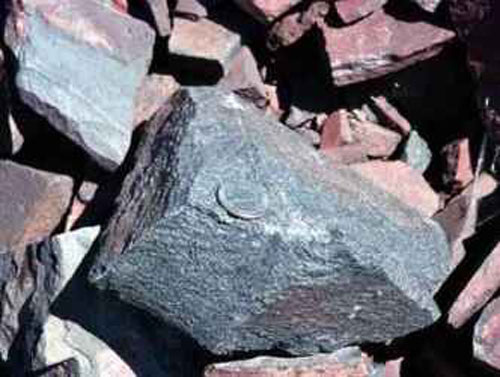 |
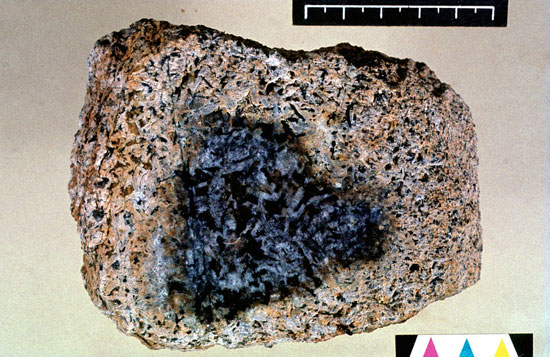 |
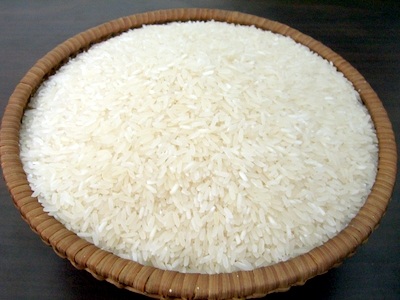 |
Raw materials are products that are exploited directly or indirectly from the natural environment, have not been processed, may have been processed...
Examples: Minerals (gold, silver, iron, lead, aluminum, coal...), food (rice, flour, vegetables...), wood, soil, sand...
2. Components
|
Steel pipes |
Electrical board |
CPU |
Components are products that have been processed from raw materials but are not ready for consumption. These types of products are often provided to businesses for the manufacturing process, producing products with full functions for consumption purposes.
Examples: Steel tubes, springs, electrical conductors, circuit boards, microprocessor chips...
3. Industrial real estate
|
Offices for lease |
Warehouses for lease |
Industrial real estate are products/services that provide locations, premises, offices, and factories for businesses.
4. Human resource
Human resources are products/services that provide employees to work in businesses for production and consumption of goods/services.
5. Aid services
|
Finance agencies |
Distribution agencies |
Aid services are products/services that help businesses operating or developing their business operations from the beginning to the end, such as creating a new product, increasing efficiency...
Examples:
- Marketing agencies
- Production agencies
- Finance agencies
- Distribution agencies
- Media agencies
Conclusion
Products & Services are a vital part of any business's marketing strategy. The classification we've provided should help you understand how to create an effective product/service offering that will generate demand and increase sales for your company.
